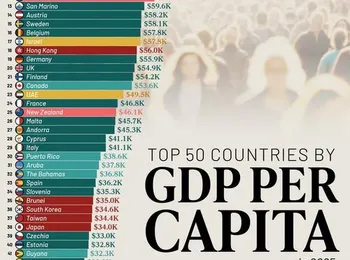President Donald Trump has issued a significant threat to Apple, proposing a 25 percent tariff on all iPhones sold in the United States unless the company shifts its iPhone production to domestic manufacturing within the United States. This dramatic move follows a direct communication from Trump, stating, "I have long ago informed Tim Cook of Apple that I expect their iPhone’s that will be sold in the United States of America will be manufactured and built in the United States, not India, or anyplace else." The statement was made on Trump’s social media platform, Truth Social, highlighting his unwavering stance on bringing manufacturing jobs back to the U.S. The situation is rapidly developing, with analysts and industry experts closely monitoring Trump’s actions and Apple’s response. The potential impact on the tech giant's profitability and market share is considerable, and the move could set a precedent for future trade disputes involving American companies. Furthermore, the move has sparked broader discussions about the role of tariffs in international trade and the potential for protectionist policies to disrupt global markets. The situation is dynamic and subject to ongoing developments, with both sides prepared to escalate the dispute if necessary.
This ultimatum comes just a week after Trump publicly expressed frustration, referring to a "little problem with Tim Cook," stemming from reports indicating Apple’s intention to increase iPhone production in India. This strategic move by Apple aimed to mitigate the impact of existing tariffs imposed on goods shipped to the U.S. from China, a key source of Apple’s components and manufacturing. The President’s reaction underscores a broader trade dispute and a continued focus on reducing reliance on foreign production, particularly from countries with which the U.S. maintains significant trade tensions. The proposed tariff represents a substantial financial burden for Apple, potentially increasing the cost of iPhones for American consumers. It raises concerns about the broader implications for Apple’s global supply chain and its relationships with key manufacturing partners. The situation is rapidly developing, with analysts and industry experts closely monitoring Trump’s actions and Apple’s response. The potential impact on the tech giant's profitability and market share is considerable, and the move could set a precedent for future trade disputes involving American companies.
Sources familiar with the matter indicate that Trump views Apple’s decision to prioritize Indian production as a deliberate attempt to avoid U.S. tariffs. He believes that Apple is exploiting loopholes in trade regulations to reduce costs and maintain its competitive advantage. This perspective reflects a broader strategy within the Trump administration to challenge what it perceives as unfair trade practices by other countries. The administration has consistently advocated for policies that incentivize domestic manufacturing and discourage companies from relocating production to countries with lower labor costs and less stringent regulations. The proposed tariff is a direct manifestation of this approach. However, the feasibility of Apple moving a significant portion of its iPhone production to the United States remains a considerable challenge. Building a fully functional and efficient manufacturing facility requires substantial investment, specialized expertise, and a robust supply chain. Moreover, the U.S. currently lacks the scale of manufacturing capacity needed to meet Apple’s global demand for iPhones. While the U.S. government has offered incentives to encourage domestic production, these efforts are unlikely to overcome the logistical and economic hurdles in the short term. The situation highlights the complex interplay between trade policy, corporate strategy, and global supply chains.
Industry analysts predict that Apple will likely explore alternative strategies to address the tariff threat, such as diversifying its supply chain or adjusting its pricing strategy. The company has a history of adapting to changing trade conditions, and it is expected to engage in negotiations with the Trump administration to find a mutually acceptable solution. The outcome of these negotiations will have significant ramifications for the tech industry and could influence future trade policy decisions. Furthermore, the move has sparked broader discussions about the role of tariffs in international trade and the potential for protectionist policies to disrupt global markets. The situation is dynamic and subject to ongoing developments, with both sides prepared to escalate the dispute if necessary.
























